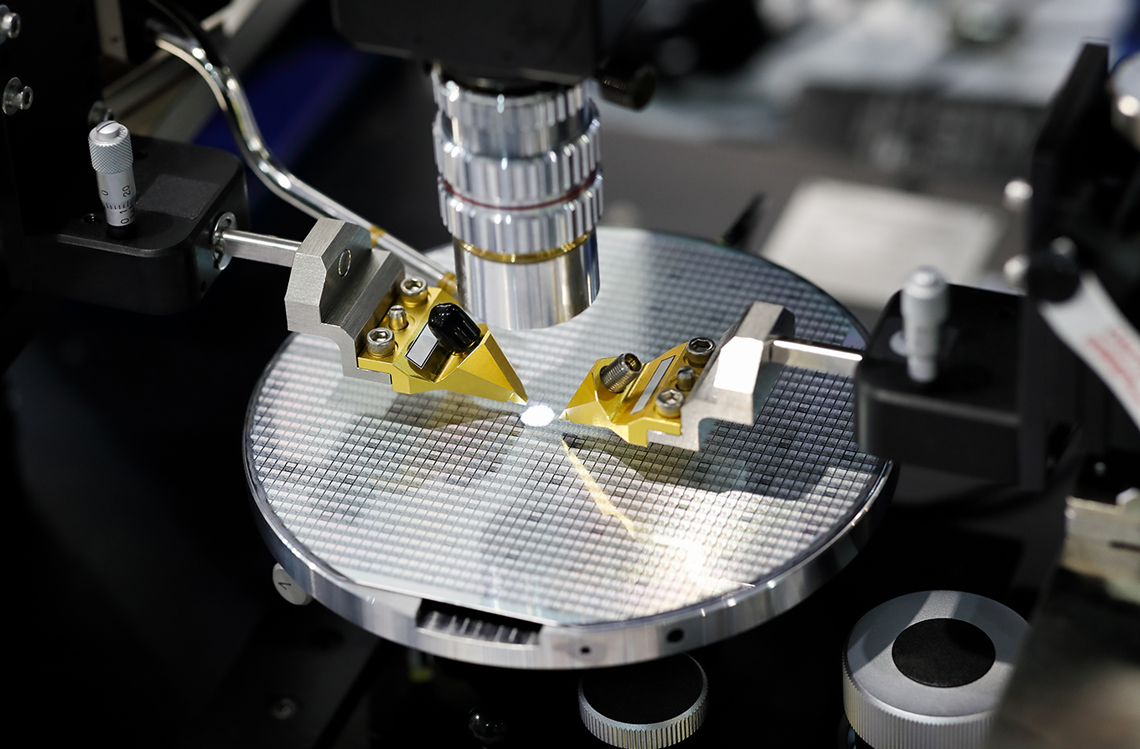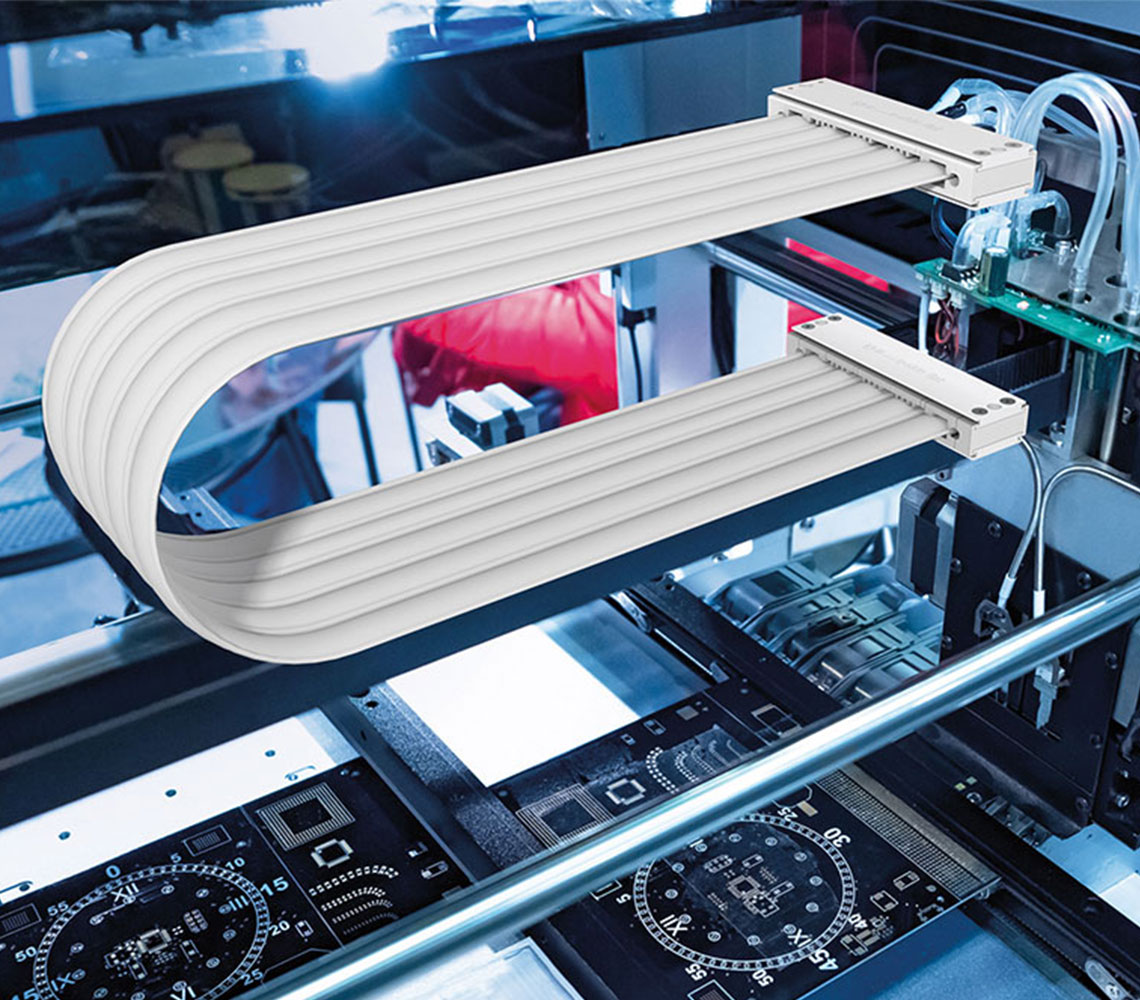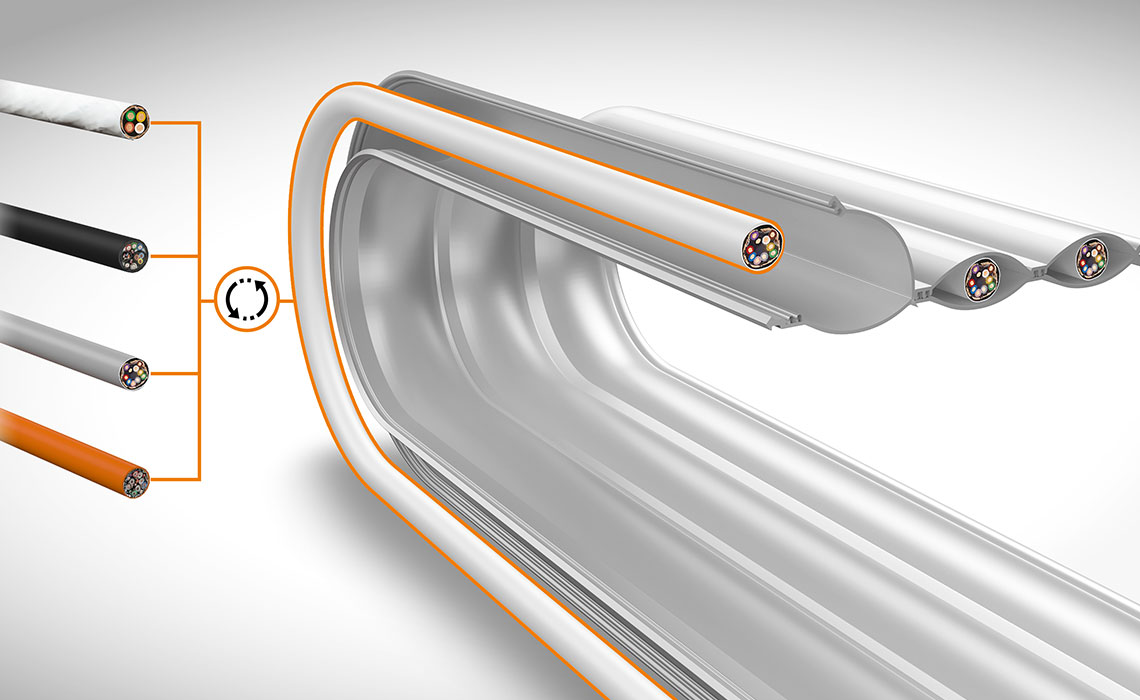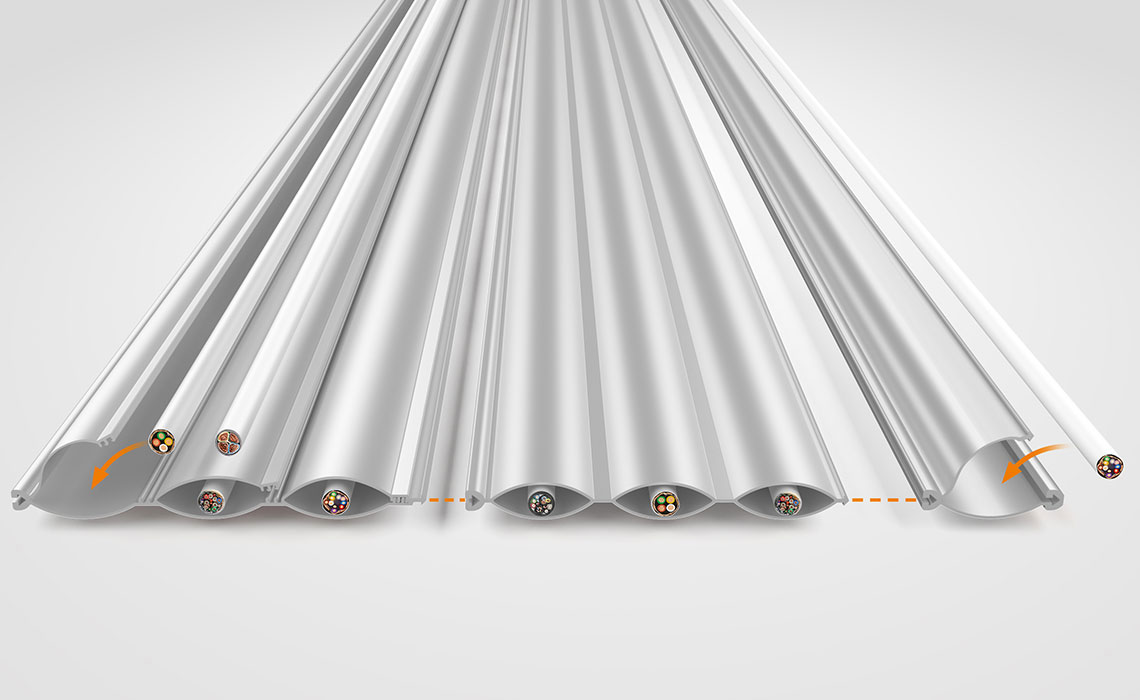A boost to your overall equipment effectiveness (OEE)
Marco Thull | 24. November 2020
Optimising overall equipment effectiveness (OEE) is the goal of electronics manufacturers. igus® is providing support to manufacturers in the form of a new cable guide for cleanrooms.
The term “overall equipment effectiveness” (OEE) refers to a measure of the value added in a system – a value between 0 and 100 per cent that shows productivity at a glance. Three factors go into OEE: availability, performance and quality. To calculate OEE, the manufacturer must first subtract planned downtime, such as production breaks and maintenance, from the calendar period (24/7). What remains is defined as 100% of operating time. After performance, availability and quality losses are subtracted from this base OEE, the system OEE remains, showing the percentage of planned running time during which the machines were able to manufacture according to quality criteria.

Tiny particles cause quality losses
Quality is one of the three pillars of OEE. It is calculated by subtracting rework and discard parts from the total number of produced parts and dividing the result by the total number of produced parts. Parts are discarded during electronics manufacture when tiny particles that are scarcely visible to the naked eye settle on sensitive products such as semiconductors, destroying them. These particles can result from machine part abrasion involving cables, for instance. A switch to modern cable guides such as e-skin® single pods is in many cases a way to reduce quality losses and increase OEE – with little financial or organisational investment.

Higher quality: cable guides cause virtually no abrasion
e-skin® single pods: the low profile that protects cables in cleanrooms from the external environment. The profiles are made of high-performance polymers that are abrasion-optimised. During operation, a cubic metre of ambient air has no more than ten particles larger than 0.1 micrometre (0.0001 millimetres), as the Fraunhofer Institute for Production Technology and Automation (IPA) confirms. e-skin® single pods thus meet the requirements of the highest cleanroom class, ISO Class 14644-1. For comparison: in one cubic metre of air next to a smoker, there are up to 100,000,000 particles larger than 0.5 micrometres. Particles of this size must not be found at all in ISO Class 14644-1.

Greater availability: modular cable guide design accelerates maintenance
e-skin® single pods have a positive effect on a further pillar of OEE: availability of machines and systems. Why? Because the design reduces downtime. So far, many electronics manufacturers have used ribbon cables with stranded cores, so-called stranding in bundles, laid parallel and inseparably connected by two PTFE/PUR/PTFE films. The disadvantage of the cables is that if one core is defective, to operator must replace the entire cable. If the customer does not have a binding framework agreement with the manufacturer, he may face long waiting times and downtime – ribbon cables are usually customer-specific and cannot be delivered from stock. e-skin® single pods do not have this limitation. The cables are not fused together, but use individual profiles that can be opened with a zipper. A defective cable can thus be replaced in a few minutes. Machine availability increases, and so does OEE.

e-skin® single pods also save the system operator installation space and energy. igus® has developed CFCLEAN as an alternative to classic cables. These stranding elements are fused together with a PTFE film for electrical protection. Since there is no outer jacket, weight is reduced by 21%. This reduces the drive energy needed and is advantageous in view of the constantly growing demands for higher acceleration values. The diameter is also 18% smaller, reducing space requirements. And space in cleanrooms is expensive. The cost of a cleanroom increases exponentially with increasing volume.
Would you like to find out more about this issue? Visit our industry website https://www.igus.eu/info/industries-cleanroom or drop me a line.
Peter Mattonet|피터 마토넷
Product & Industry Manager Cleanroom
igus Korea Co., Ltd.
Phone: +82 32 821 2911
Fax: +82 32 821 2913
Mobile: +82 10 4592 2921
Mobile: +49
E:mail: pmattonet@igus.net
